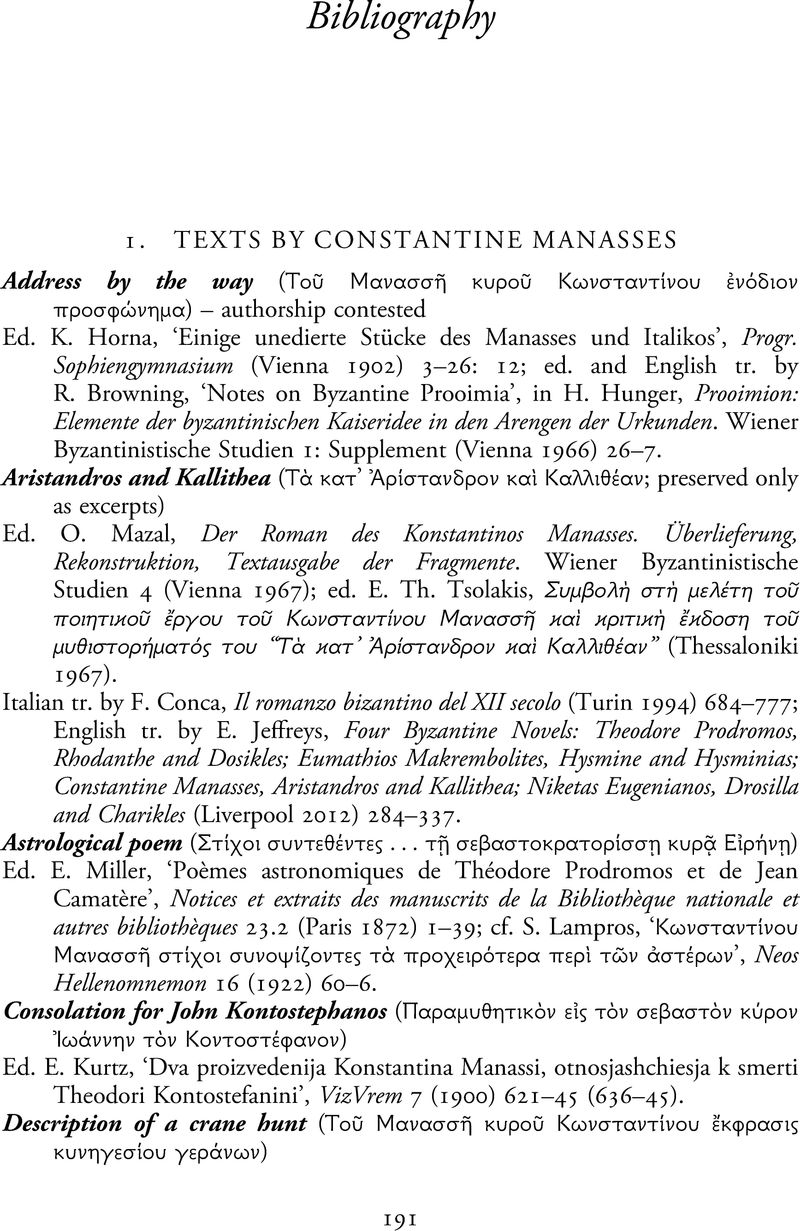Book contents
- Writer and Occasion in Twelfth-Century Byzantium
- Frontispiece
- Writer and Occasion in Twelfth-Century Byzantium
- Copyright page
- Contents
- Acknowledgements
- A Note on Texts and Translations
- List of Abbreviations
- Chapter 1 The Authorial Voice of Occasional Literature
- Chapter 2 Praising the Emperor, Visualizing His City
- Chapter 3 The Occasion of Death
- Chapter 4 In Times of Trouble
- Chapter 5 On an Educational Note
- Chapter 6 Life, Love and the Past
- Chapter 7 Occasional Writing as a Creative Craft
- Bibliography
- Index locorum
- General Index
- References
Bibliography
Published online by Cambridge University Press: 03 December 2020
- Writer and Occasion in Twelfth-Century Byzantium
- Frontispiece
- Writer and Occasion in Twelfth-Century Byzantium
- Copyright page
- Contents
- Acknowledgements
- A Note on Texts and Translations
- List of Abbreviations
- Chapter 1 The Authorial Voice of Occasional Literature
- Chapter 2 Praising the Emperor, Visualizing His City
- Chapter 3 The Occasion of Death
- Chapter 4 In Times of Trouble
- Chapter 5 On an Educational Note
- Chapter 6 Life, Love and the Past
- Chapter 7 Occasional Writing as a Creative Craft
- Bibliography
- Index locorum
- General Index
- References
Summary

- Type
- Chapter
- Information
- Writer and Occasion in Twelfth-Century ByzantiumThe Authorial Voice of Constantine Manasses, pp. 191 - 214Publisher: Cambridge University PressPrint publication year: 2020

